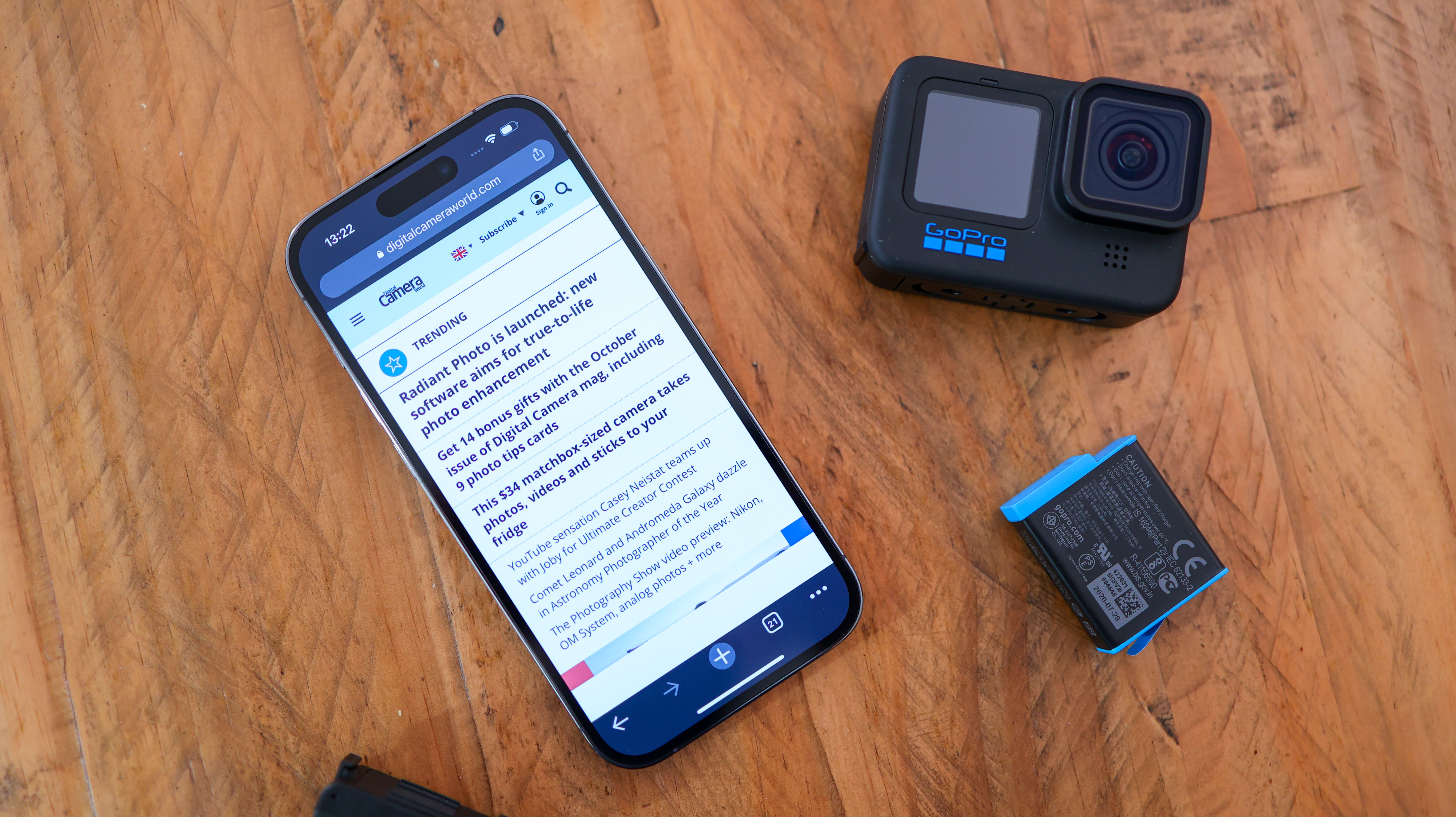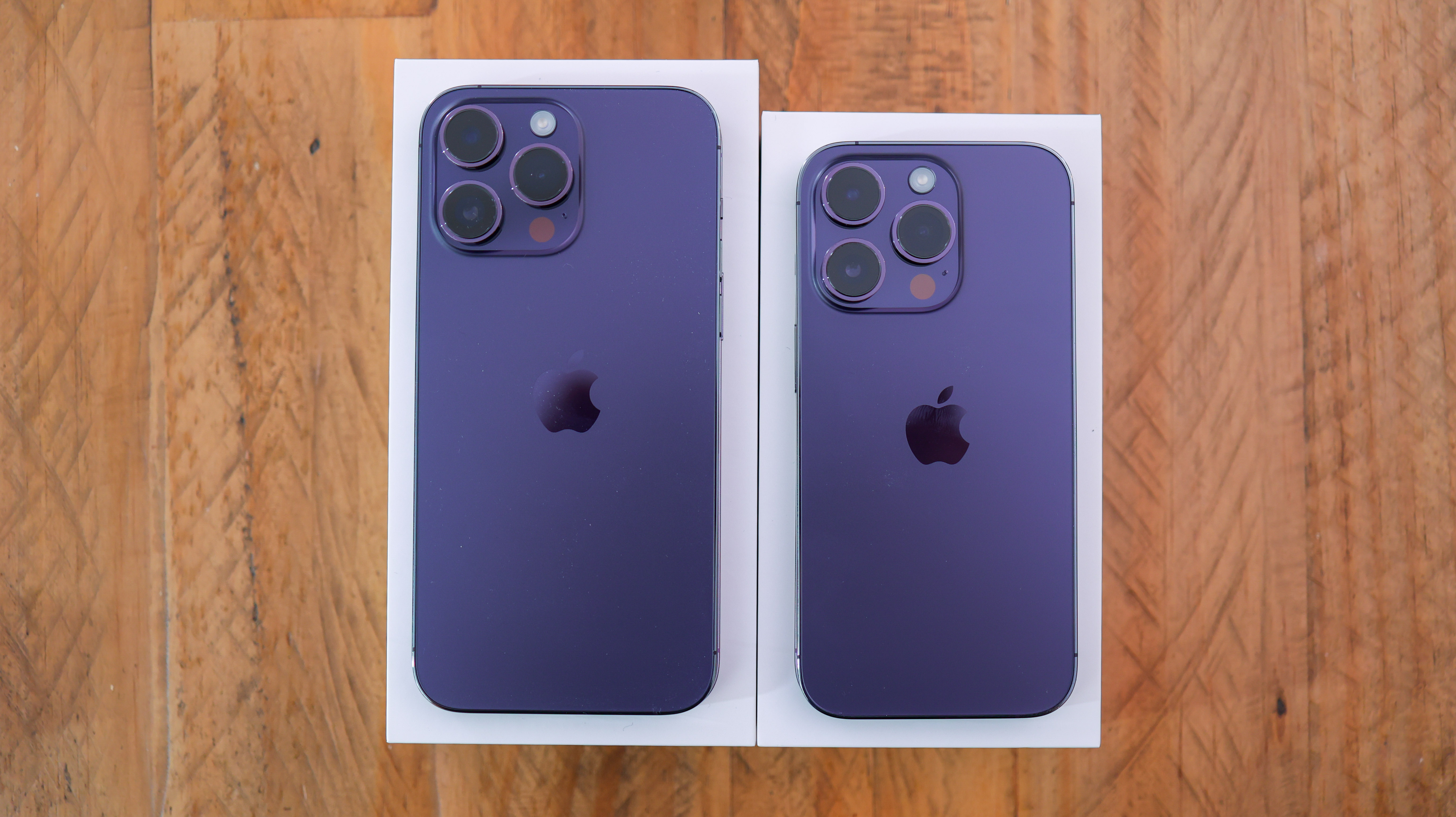Once upon a time, Apple was the only smartphone maker charging over $1,000 / £1,000 for their phones, but now with more firms upping their prices, the new iPhone 14 Pro (starting at $1,099 / £1,099) is in good company.
In a world filled with expensive phones, what does Apple do to stand out from the pack? Starting with imaging, the new selfie camera, which lives on Dynamic Island, along with the Face ID sensors, now has autofocus for better depth recognition and close-up shots. The main camera sensor is also larger, edging close to that one-inch mark Xiaomi hit with its 12s Ultra, and Apple’s also bumped up the resolution from 12MP to 48MP – the first pixel-count bump since 2015.
The Apple iPhone 14 Pro costs roughly the same as the Oppo Find X5 Pro and Xiaomi 12 Pro in the UK, and a bit less than the Samsung Galaxy S22 Ultra globally. But can Apple’s new camera mix for its priciest iPhones to date make the 14 Pro and Pro Max – which pack identical optics – the best iPhone for photography, and possibly even the best camera phone (opens in new tab)?
iPhone 14 Pro design and screen
While it looks very iPhone 13 Pro from behind, it’s all about the Dynamic Island from the front, helping the new iPhone 14 Pro stand out from the pack.
Available in a new Deep Purple color, you can also pick up the Pro in Gold, Silver, and Space Black, and all four options have a frosted back. Side-by-side with the 13 Pro, the new iPhone doesn’t look different, but it is a bit thicker thanks to that new camera sensor. It’s got the same button configuration: a power button on the right, volume buttons on the left, and an alert slider. That said, iPhone 13 Pro cases (opens in new tab) won’t quite fit the new model thanks to slightly different button positioning.
The new iPhone line is IP68 water resistant and is also protected by a scratch-resistant Ceramic Shield front panel of glass. You don’t get a pre-fitted screen protector on the phone, nor do you get a case in the box, and you don’t get a charger either. But the Pro does ship with a USB-C to lightning cable that powers up the iPhone.
Weighing 206g, the 14 Pro is only a few grams heavier than the iPhone 13 Pro (opens in new tab) which launched last year. It’s also thicker too, officially measuring 7.85mm deep, but actually measuring around 11.5mm when factoring in that mighty camera bump.
With a 6.7-inch screen, Apple’s iPhone 14 Pro takes on the Samsung Galaxy S22, and other high-performing yet compact flagship phones. Light on compromises, the 14 Pro’s screen is best-in-class in key areas, with a maximum brightness of up to 2000 nits, besting even Samsung’s finest flagship displays.
The 14 Pro’s Super Retina XDR display doesn’t just get bright, it’s also nice and sharp with a 2556×1179 resolution, with a pixel density of 460 pixels per inch. In the top center is the Dynamic Island, and the phone is also the first from Apple to support an always-on display. Add HDR credentials and a 120Hz refresh rate to the mix, and the iPhone 14 Pro doesn’t tread any new ground, but it does check all the flagship boxes.
iPhone 14 Pro camera specs
The iPhone 14 Pro’s 48MP camera is a huge spec bump over past-generation iPhones. We haven’t seen a megapixel boost since the iPhone 6s took the line’s sensors from 8MP to 12MP. Since then, there have been more cameras added, but no more megapixels. For 2022, Apple’s introduced a large 1/1.28-inch sensor which out-sizes the Galaxy S22 Ultra and much of the Android flagship competition.
The new, larger sensor is matched with an f/1.78 aperture lens with a 23mm focal length, second-generation sensor-shift optical image stabilization, a seven-element lens, and 100% focus pixels.
Apple’s also updated the ultra-wide camera, increasing its sensor to 1/2.55 inches, and matching that with a 12MP resolution and a 13mm focal length. It also benefits from 100% of its pixels being focus pixels, and has a six-element lens and autofocus.
Apple takes advantage of the main camera’s high-resolution sensor when it comes to its telephoto offering. Adding a digital lens, the iPhone 14 Pro crops into the inner 12MP of the main camera sensor to create a two-times telephoto photo. This punches into 48mm – perfect for portraits.
For objects that are further away, the 14 Pro packs the same 12MP three times telephoto camera as the 13 Pro Max, with a 77mm focal length and an f/2.8 aperture, as well as OIS, and a six-element lens.
The cameras benefit from sapphire crystal lens cover protection, and there’s also a LiDAR scanner, which helps with night mode portraits. Another noteworthy addition, the iPhone 14 Pro introduces a new action mode, which adds GoPro-style stabilization to 2.7K video content for high-motion shooting.

Apple’s selfie camera, which has been updated with autofocus, unfortunately, doesn’t appear to pack a new, larger sensor or benefit from a megapixel bump. Instead, it features the same 12MP camera with an f/1.9 aperture introduced on the iPhone 11 Pro in 2019, only now, it can focus on near or far objects.
iPhone 14 Pro additional specs
The new Apple A16 Bionic chip powering the new iPhone Pros is the firm’s most powerful to date, unsurprisingly, and with the iPhone 13 Pro and its A15 performing so well, we have no reason to doubt the 14 Pro’s performance.
Running iOS 16, the operating system which is currently rolling out to older-gen iPhones right now with features like smart, customizable lock screens, to get the full benefit of the OS – namely that always-on display, you’ll need a 14 Pro or Pro Max.
Available with 128GB storage as a starting capacity, and packing as much as 1TB storage, in its highest-capacity guise, the iPhone 14 Pro can cost as much as $1,649 / £1,649.
With wireless charging, Apple claims the 14 Pro charges up to 50 percent in as little as 30 minutes, and the phone also supports Qi wireless and MagSafe charging too.
With 5G connectivity and eSIM support globally, US customers lose out on the SIM card tray altogether, while global customers all gain access to a new satellite communication system and crash detection. Taking the mantra ‘prepare for the worst, hope for the best’ to heart, the first feature connects the iPhone to a satellite in order to contact emergency services when you have no signal. As for the second feature, it detects the high-impact of a crash, and automatically calls for help, unless you stop your phone in time.

iPhone 14 Pro early verdict
The iPhone 14 Pro Max is, off the bat, a pocketable powerhouse. Yes, it’s thick, but its relatively compact footprint and ample camera and power mix make it an enticing option, especially for photographers.
We’re really excited to see how far Apple can push the photography experience now the Pro line has a new, larger sensor that takes the fight to its Android competition. Arguably more exciting is what app developers are able to tap into, from Lightroom to Filmic Pro, those 48MP RAW photos and lowlight 4K videos should look much better this time around.
So while the new iPhone 14 Pro is expensive, it’s made an excellent first impression. Watch this space to see how it fares after a week of use, when we’ll update this with a full review and comparisons with the best camera phones money can buy.
Discover the whole Apple iPhone 14 lineup, and see how the iPhone 14 Pro compares to the iPhone 13 Pro – is it worth the upgrade? (opens in new tab)
Whether you’ve got an old or new iPhone, you might also need an iPhone power bank (opens in new tab) or iPhone charger (opens in new tab). Plus, check out the best iPhone printer (opens in new tab) for some creative fun.





